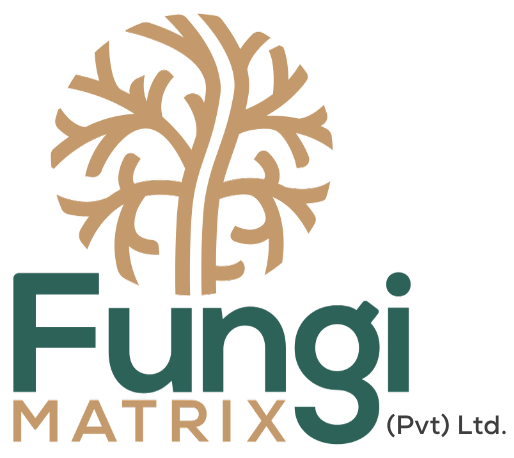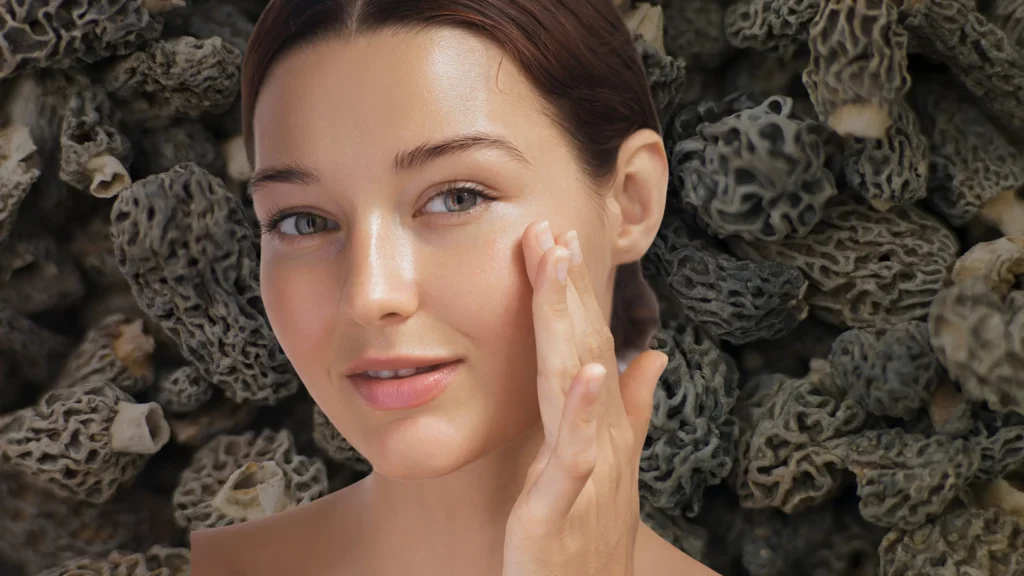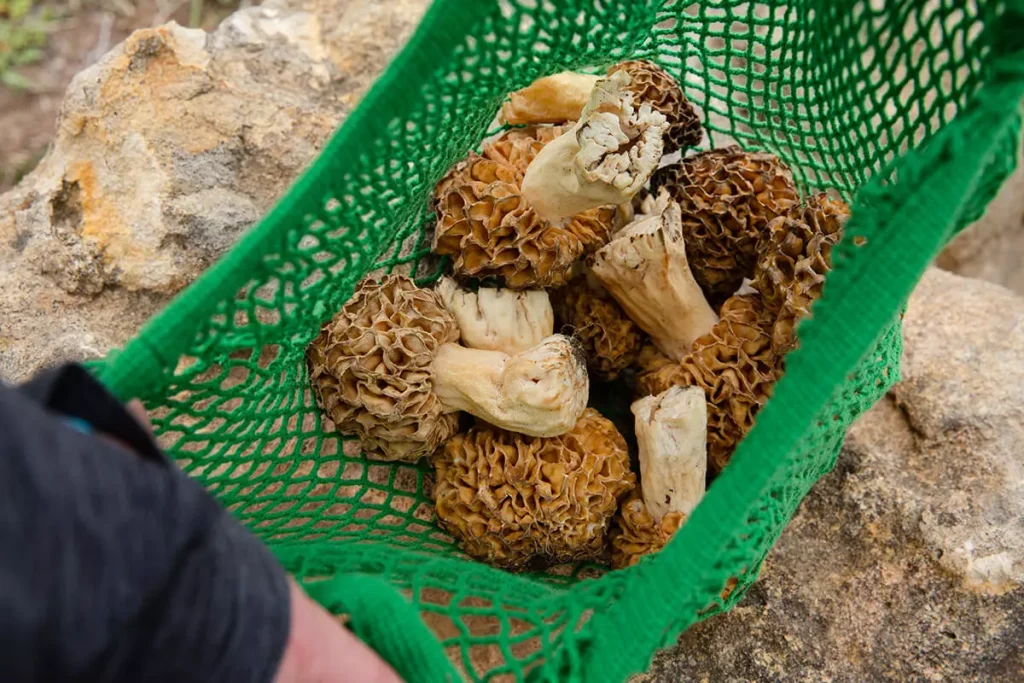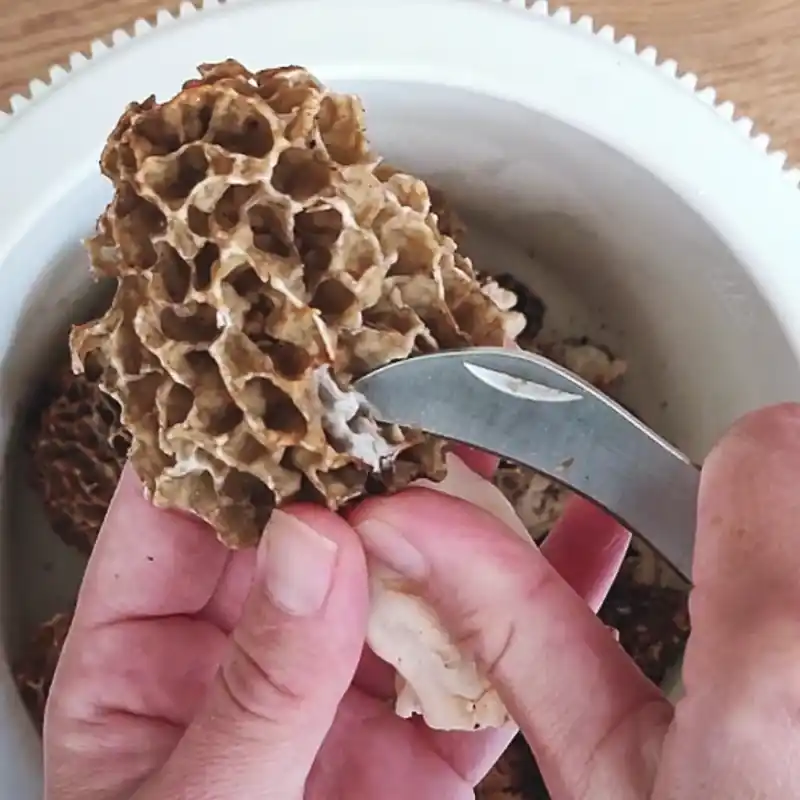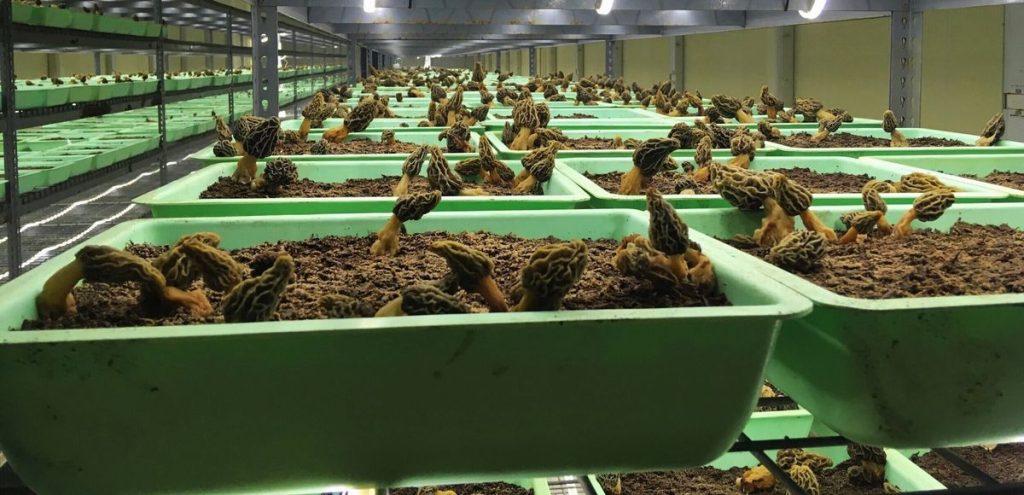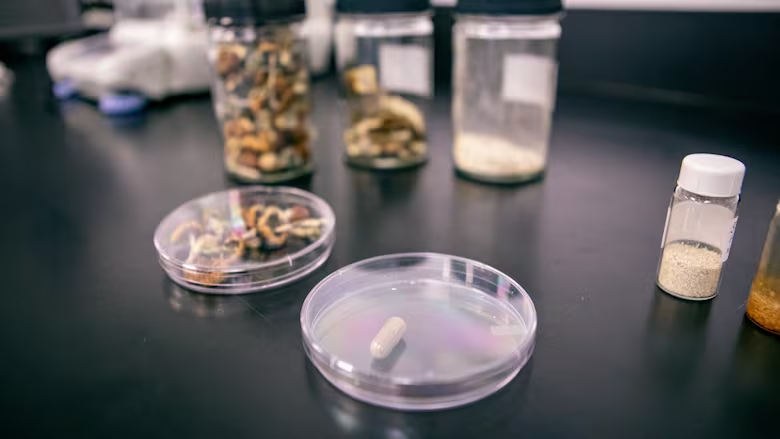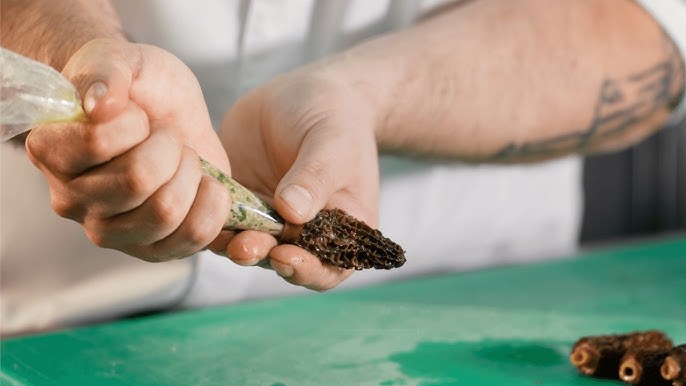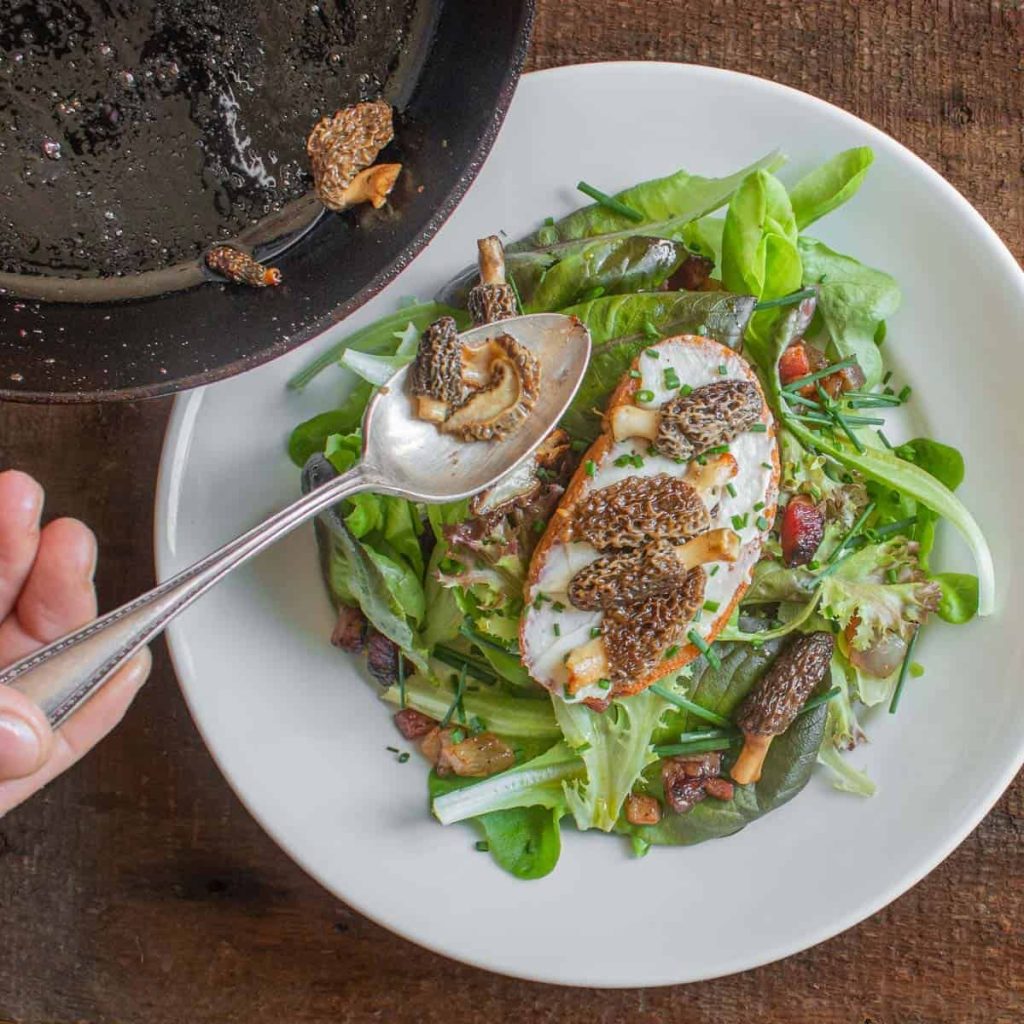The Beauty Secret of Morel Mushrooms: Nature’s Skincare Treasure
The Beauty Secret of Morel Mushrooms: Nature’s Skincare Treasure In the lush, high-altitude forests of Gilgit-Baltistan, Swat, Malakand, and Azad Jammu & Kashmir, morel mushrooms flourish beneath the pine, cedar, and hardwood canopies of the Himalayan, Hindu Kush, and Karakoram mountain ranges. Known for their unmatched aroma, texture, and purity, these wild, premium-grade dried morels are highly sought after in culinary hubs such as France, Spain, Germany, the UK, and Italy. At Fungi Matrix, we work closely with local foragers to carefully source and preserve these exceptional mushrooms — not only for gourmet kitchens, but also for innovative skincare applications. Beyond their culinary prestige, morel mushrooms are emerging as a skincare sensation, rich in bioactive compounds that promote radiant, youthful-looking skin. Why Morel Mushrooms Are a Skincare Superstar Dried morel mushrooms, with their rich array of antioxidants, vitamins, and anti-inflammatory compounds, offer powerful benefits for skin health. Sourced from Pakistan’s pristine forests, our morels retain these bioactive properties through careful drying, making them a coveted ingredient in the wellness and beauty industries. Their ability to combat aging, hydrate skin, and reduce inflammation makes them a natural choice for premium skincare formulations. Key Bioactive Compounds for Skincare Morel mushrooms contain potent compounds that enhance skin vitality, making them a hidden gem in cosmetics and nutraceuticals. 1. Antioxidants (Phenolic Compounds) What They Do: Phenolic compounds, like gallic acid and flavonoids, neutralize free radicals caused by UV exposure, pollution, and stress, preventing oxidative damage to skin cells. Skincare Benefits: Reduce signs of aging, such as fine lines and wrinkles. Protect against environmental damage, promoting a radiant complexion. Support skin repair by combating oxidative stress. Applications: Morel extracts in anti-aging serums, creams, or masks, popular in France and Italy’s luxury beauty markets. 2. Vitamin D What It Does: Naturally present in morels, especially those exposed to sunlight during growth, vitamin D supports skin cell turnover and repair. Skincare Benefits: Enhances skin barrier function, reducing dryness and sensitivity. Promotes even skin tone and a healthy glow. May alleviate conditions like eczema or psoriasis by supporting skin immunity. Applications: Morel-infused moisturizers or supplements for skin health, appealing to UK and German consumers seeking natural solutions. 3. Polysaccharides What They Do: Complex carbohydrates, including beta-glucans, with anti-inflammatory and hydrating properties. Skincare Benefits: Soothe irritated or inflamed skin, reducing redness and sensitivity. Boost hydration by enhancing the skin’s moisture barrier. Support collagen production, improving skin elasticity. Applications: Morel extracts in hydrating face masks or calming lotions, ideal for Spain’s wellness-focused skincare market. 4. Ergosterol What It Does: A sterol in morel cell membranes, a precursor to vitamin D2, with antimicrobial and antioxidant properties. Skincare Benefits: Fights acne-causing bacteria, promoting clearer skin. Protects against environmental stressors, maintaining skin integrity. Supports anti-aging by reducing oxidative damage. Applications: Morel-based serums or cleansers for acne-prone or aging skin, gaining traction in European beauty trends. Scientific Support for Morel Skincare Benefits Emerging research highlights the potential of morel mushrooms in skincare: Antioxidant Activity: A 2020 study in Journal of Food Science confirmed morels’ high phenolic content, linked to protecting skin from oxidative stress. Anti-Inflammatory Effects: Research in Food & Function (2018) showed fungal polysaccharides, like those in morels, reduce inflammation, beneficial for sensitive skin. Vitamin D Benefits: Studies in Nutrients (2019) emphasize vitamin D’s role in skin repair and barrier function, abundant in morels. Antimicrobial Properties: Molecules (2021) noted ergosterol’s potential against skin pathogens, supporting its use in acne treatments. Note: Morels must be processed or cooked to eliminate potential toxins. Skincare products should use safe, purified extracts. How Morels Enhance Skincare Products Anti-Aging Serums: Phenolic-rich extracts combat wrinkles and age spots, perfect for luxury brands in France and Italy. Hydrating Masks: Polysaccharides provide deep hydration, appealing to Spain’s beauty market. Cleansers for Acne: Ergosterol’s antimicrobial properties help clear blemishes, popular in Germany’s natural skincare scene. Nutricosmetics: Morel powder in supplements supports skin health from within, a growing trend in the UK. Why Choose FungiMatrix for Skincare-Grade Morels? Our hand-forged dried morel mushrooms are crafted to meet the needs of the beauty and wellness industries: Pure and Potent: Sourced from Pakistan’s Himalayan, Hindu Kush, and Karakoram forests, our morels are dried to preserve bioactive compounds for maximum skincare benefits. Sustainable Sourcing: Eco-friendly foraging ensures purity and protects the environment, resonating with Europe’s eco-conscious consumers. Global Supply: Morel mushrooms from this region are supplied to markets in France, Spain, Germany, the UK, Italy, and other parts of the world, supporting beauty brands and fine dining. Premium Quality: Each morel is hand-picked and inspected to meet the highest standards for skincare applications. Tips for Using Morels in Skincare Formulations Safe Extraction: Use water-based or solvent-free methods to extract bioactives for serums, creams, or masks, ensuring safety and efficacy. Quality Control: Test morel extracts for contaminants and potency to meet EU cosmetic regulations (Regulation (EC) No 1223/2009). Culinary Synergy: Combine skincare with nutrition by using morel powder in functional foods, promoting radiant skin from within. Rehydration for Testing: Soak dried morels in warm water for 20–30 minutes to assess texture and bioactives before processing. Culinary Connection to Beauty European chefs enhance wellness-focused menus with morels, supporting skin health through diet: France: Morel sauces with vegetables for anti-inflammatory benefits. Spain: Tapas with morels and greens, boosting antioxidant intake. Germany: Morel-enhanced lean meats for overall wellness. UK: Seasonal soups with morels for vitamin D support. Italy: Risottos with morels, promoting hydration and skin vitality. Unlock Nature’s Beauty Secret with FungiMatrix Dried morel mushrooms are a skincare treasure, blending the wild essence of Pakistan’s forests with powerful bioactive compounds. Whether you’re a beauty brand in France crafting anti-aging serums or a chef in Italy creating wellness dishes, FungiMatrix premium dried morels to elevate your creations. Contact us at FungiMatrix to source nature’s finest morels and bring radiant beauty to the world.
